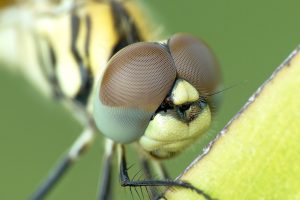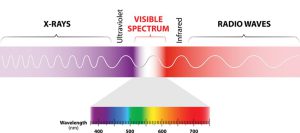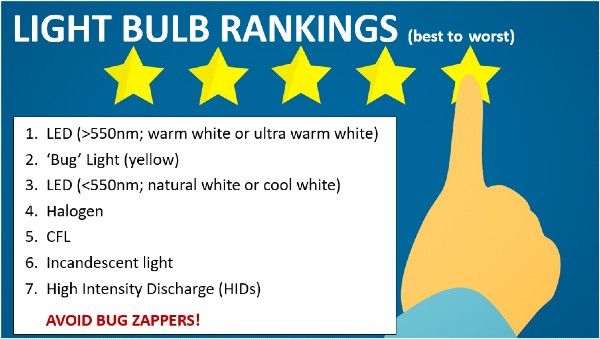Do you wake up to find calling cards left under your porch light by frogs and lizards? We can all agree that cleaning up the mess every morning is certainly annoying. Well, there’s an easy and inexpensive way to end the nightly poo-party without the use of pesticides, or any other product for that matter, that can be harmful to wildlife. It just requires a quick trip to the store!
First, let’s start with ‘why’ frogs and lizards are hanging around your entry door every night. They are hanging around your exterior doors since insects account for a large part of their diet and exterior lights left on during the night draw insects to the light. This concentration of insects, in turn, attracts the animals that feed on them. By morning the predators all have full bellies, and the homeowner is left to clean up the mess caused by the evening feeding frenzy.
Without diving into the details of why insects are attracted to light, let’s just say that a large majority of insects are drawn to a warm, glowing lightbulb. This behavior can be adjusted for and spotlights an easy way to decrease insects congregating at your exterior lights in the evening– change the light source! Better yet, turning the light off during the night is the best option although not always feasible. Decreasing or changing the type of artificial lighting is a simple way to decrease the number of insects as well as clean-up time after a nightly feeding frenzy. Although this is an easy fix, picking the correct type of light source is really the key.
ALONG THE VISIBLE LIGHT SPECTRUM
The type of artificial light matters since not all lighting sources are equal when it comes to insect preference. Both light bulb color and intensity have a very strong effect on insects. light color is defined by wavelength (nm) and light intensity is the energy (Hz). Let’s break this down as it relates to lightbulbs.
Wavelength (nm)
 Insects do not see the same colors as humans. They do not see in the same section of the visible light spectrum as humans. The wavelength ranges that people can see is between 400nm and 800nm, violet to red, but not in the ultraviolet. Insects see between 300nm to 650nm, including ultraviolet light, but really prefer between 300 to 420nm. This equates to insects primarily seeing three colors – ultraviolet (UV), blue, and green.
Insects do not see the same colors as humans. They do not see in the same section of the visible light spectrum as humans. The wavelength ranges that people can see is between 400nm and 800nm, violet to red, but not in the ultraviolet. Insects see between 300nm to 650nm, including ultraviolet light, but really prefer between 300 to 420nm. This equates to insects primarily seeing three colors – ultraviolet (UV), blue, and green.
Energy (Hz)

 Insects prefer high intensity. On the light spectrum, the shorter the light wavelength, the higher the energy or frequency or intensity. So, insects are attracted to the section of the visible light spectrum with higher energy or intensity. This again, is ultraviolet to green since they have shorter wavelengths and higher intensity.
Insects prefer high intensity. On the light spectrum, the shorter the light wavelength, the higher the energy or frequency or intensity. So, insects are attracted to the section of the visible light spectrum with higher energy or intensity. This again, is ultraviolet to green since they have shorter wavelengths and higher intensity.
Since different lightbulb types have different color and intensity, choosing the correct lightbulb for the exterior will be the primary factor behind how many or how few insects are attracted to your exterior lights at night.
LIGHTBULBS TO AVOID
The four different lightbulb types that are highly attractive to insects are the following:
- Incandescent
- Compact fluorescent (CFL)
- Halogen
- High Intensity Discharge (HIDs)
Each of these lightbulb types emit light with shorter wavelengths, specifically UV radiation, and are more visible to insects. A lightbulb’s UV output is the #1 factor in attracting insects. Shorter wavelength lightbulbs also produce more heat! They are energy gluttons and waste up to 90% of the energy they consume in the form of heat. A double whammy is insects with thermal or heat receptors. They can sense the heat released by these light sources and be drawn to the light.
THE LIGHTBULB OF CHOICE
Using light-emitting diode bulbs—LED lightbulbs – produce very little to no UV light which makes them less visible to insects. They also produce very little to no heat which makes them less appealing to insects with thermal receptors. These lightbulbs are 90% more efficient than incandescent light bulbs. This is great for decreasing the attractiveness to insects and keeping more money in your pocket.
However, some LED bulbs are manufactured to produce shorter wavelengths of light (<550nm). They are labeled bluish white or cool white color and slightly attractive to bugs. The LED lights that are least attractive to insects, so the most effective lightbulb to use, are those labeled warm white or ultra warm white (>550nm).
Not to complicate the explanation, but LED bulbs are sometimes listed with a correlated color temperature (CCT) instead of nanometers. The CCT is measured in Kelvin (K), and different temperatures on the Kelvin scale represent different colors. LED bulbs below 3600K will emit warm or ultra warm white light that is difficult for insects to see. On the flip side, LED bulbs above 3600k emit natural or cool white light and attract more insects.
When purchasing an LED lightbulb, be sure you are choosing the correct bulbs for exterior lighting:
- LED Lightbulbs that are most effective at decreasing insects (best to use!)
- wavelengths >550nm
- CCT <3600K
- Labeled ‘warm white’ or ‘ultra warm white’
- LED lightbulbs that are not as effective at excluding insects as exterior lighting (but still good!)
- wavelengths <550nm
- CCT >3600K
- Labeled ‘natural light’ or ‘cool white light’
YELLOW BUG LIGHTS
Finally, the lightbulbs labeled as “bug lights.” These bulbs are typically yellow or yellow-coated LED lightbulbs. They give a peak wavelength of 550-600nm and are effective at decreasing unwanted insects congregating at your exterior lights in the evening. The yellow color may not be appealing to our human eye, but they are extremely effective and harm-free!
UV BUG “ZAPPERS”
The opposite to good are the “bug zapper” lights. Since UV is the wavelength most attractive to insects, bug zappers typically house a UV or black-light lightbulb. These zappers are incredibly detrimental to insects, killing thousands of insects. However, they are indiscriminate and end up killing a much higher percentage of beneficial insects than pest insects. Be kind to our pollinators and beneficial insects and avoid using bug zappers to control insects outdoors.
SUMMARY
RESOURCES
- Insect Vision: Ultraviolet, Color, and LED Light
- Why flying insects gather at artificial light
- The Devastating Role of Light Pollution in the ‘Insect Apocalypse’
Source: UF/IFAS Pest Alert
Note: All images and contents are the property of UF/IFAS.




